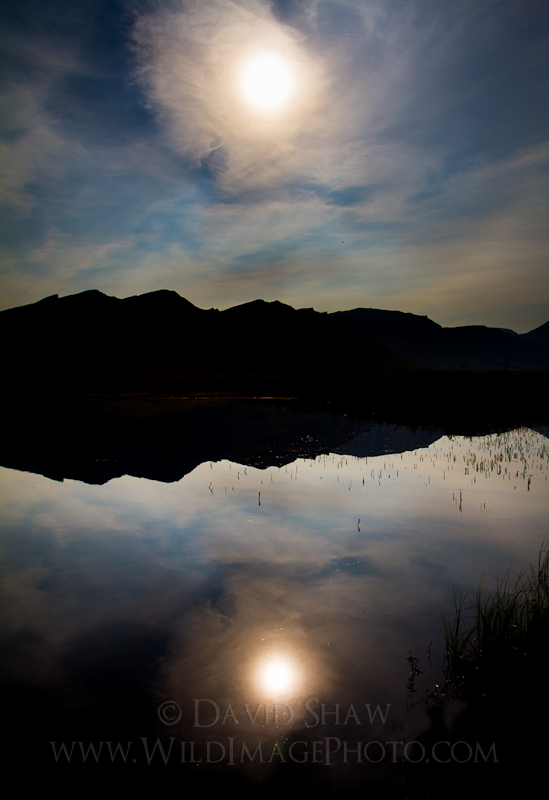After 17 days of canoeing, hiking, photography, rain and wind dodging, and wildlife watching in the western Brooks Range I’m back in Fairbanks. The trip was…. well the trip was… It was kinda… It was a bit of everything. The weather was great, and then it sucked, and then periodically for a few minutes it was great, and then it sucked again and then it was amazing, and then it REALLY sucked, and then it was OK, and then we went home.
On wilderness trips, I am obsessed by the weather. My journals are constantly referring to what the sky is doing, whether the barometer is rising or falling, or if the wind is howling, or settled to a pleasant breeze. This trip, I gave up. I never could tell if it was changing, which it rarely did, and instead I went all Zen about the weather. Gave up worrying, gave up trying to predict, and just went with whatever came. It was liberating. More on the trip in the coming days as I settle down to image editing and have some more to share.
Today, however I wanted to address something that has come up regularly in my photography. A question that I’m asked on an all-too-regular basis: “Do you manipulate your images?” Immediately, I have to resist the knee-jerk reaction to become defensive, as though the question is an accusation. And because, if I’m as honest as I try to be, the answer is unquestionably a resounding YES!. Of course I manipulate my images. And it all starts the moment I’m inspired to make an image. From there on out it is all manipulation.
This image is a perfect example. Our second camp of the trip was situated a short walk from a couple of nice little riverside lakes. It was dead calm when we’d walked up to fish for grayling and pike. The lakes were like glass in the windless day and reflected, to perfection, the mountains, sky, and clouds. It was late morning, and the light was harsh, flat, and dull. But by god, those reflections were amazing. How to capture that? I set down fishing rod and picked up camera. And right there I started manipulating the image to come.
If I was trying to make the image look like the reality before me, I would have ended up with a shot of flat-lit mountains reflected in the water. Nice and boring. I don’t like nice and boring and so right in the camera I started working. First, I wildly under-exposed to assure that the sky and sun did not blow out. I went for a vertical composition, and put the horizon smack dab in the middle of the frame to create symmetry between the sky and its reflection. I clicked a shot, checked the histogram and the image, and shot again, and again, until I got close to what I’d envisioned, a dark, surreal image of the sun, sky and mountains, flipped like a mirror.
Later, in Adobe Lightroom, I did some more work, I evened out the exposure of the sky and water by throwing a digital neutral density filter on the top half of the image and then did a little color and contrast work to give the image some pop. RAW images, as many readers know, look flat when they are unprocessed, far less compelling than the reality they represent. To make them look decent they require some work. A few minutes of fiddling later, and this image emerged.
Is it manipulated? Of course it is. The reality looked nothing like this, and yet it’s almost exactly what I saw in my head when I picked up the camera.
Related posts:
Wow, I haven't been posting and I'm late on the February Desktop... Sorry a...
(Colorado River and our camp across the river from Deer Creek Falls. Cano...
On Saturday, Amy and I gathered some lunch materials and and made the...

